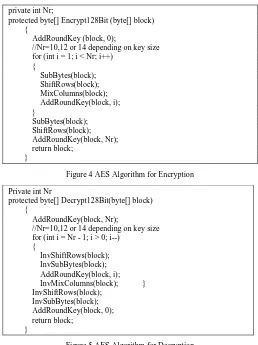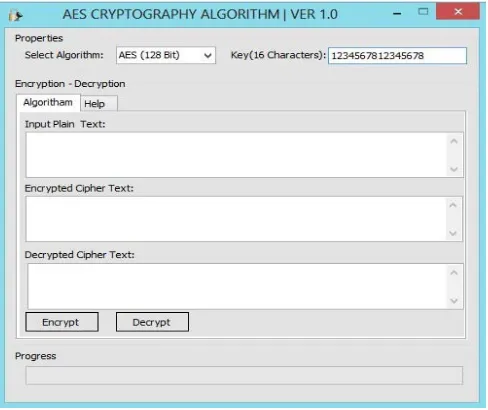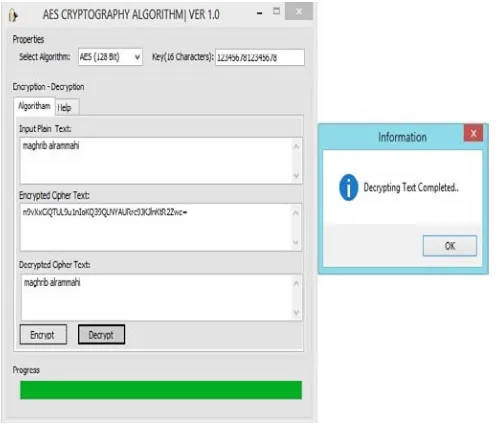Development of Advanced Encryption Standard (AES) Cryptography Algorithm for Wi Fi Security Protocol
Full text
Figure




Related documents
The paradoxical perspective sees sexual preferences of all types as being the result of a complex interaction of biology/genetics: early childhood imprinting experiences
In this review, we will introduce point-of-care ultrasound (POCUS) applications regarding the soft tissue and musculoskeletal systems: soft tissue infections, joint effusions,
It was found that the potential is independent (a) of the metabolite ratio employed, confirming the earlier observations of Lehmann, (b) of the hydrogen ion activ- ity, and (c)
With the concept of photovoice [9] and the social-ecological model of health [2], the project team developed a health promotion programme titled ‘Make a Change through
After adjustment of partial-NPVs via the corresponding project remaining capital and recurring costs the average NPVs come down to -24 and -22 Mio USD using
Two different creep failure mechanisms for austenitic stainless steel foils are possible since the creep failure data falls very close to the boundary of
We propose a hierarchical image classification which classifies images which based on their contents and then refine each category into subcategories based on their metadata to
To answer this, Sp6/HL hybridoma cells were transfected with Bst EII-cleaved pT D C m vector, and plasmid samples extracted at the 3-hr peak in 39 extension were analyzed by PCR